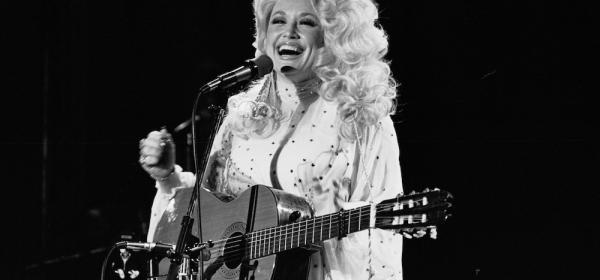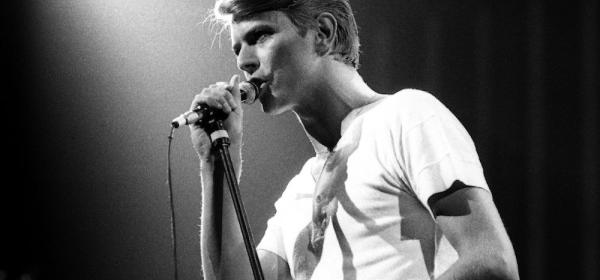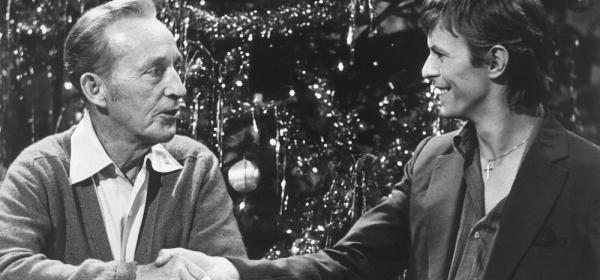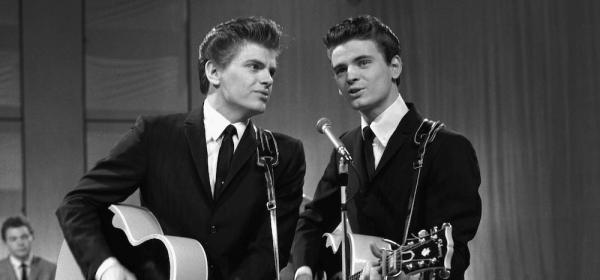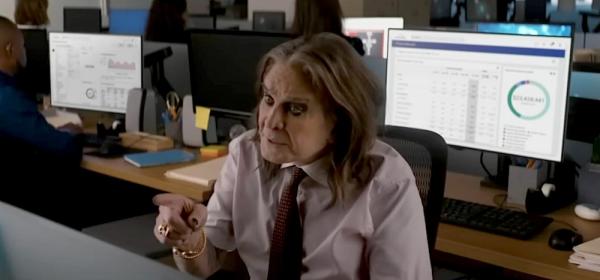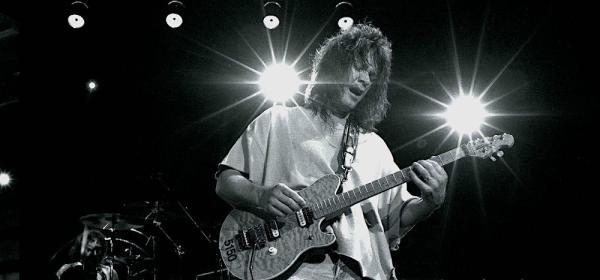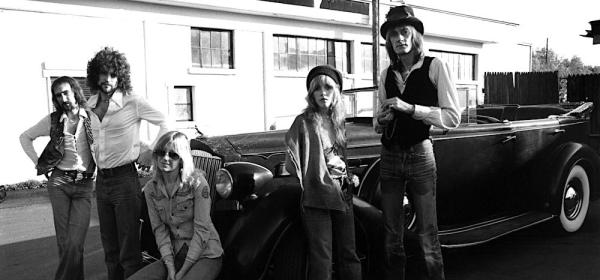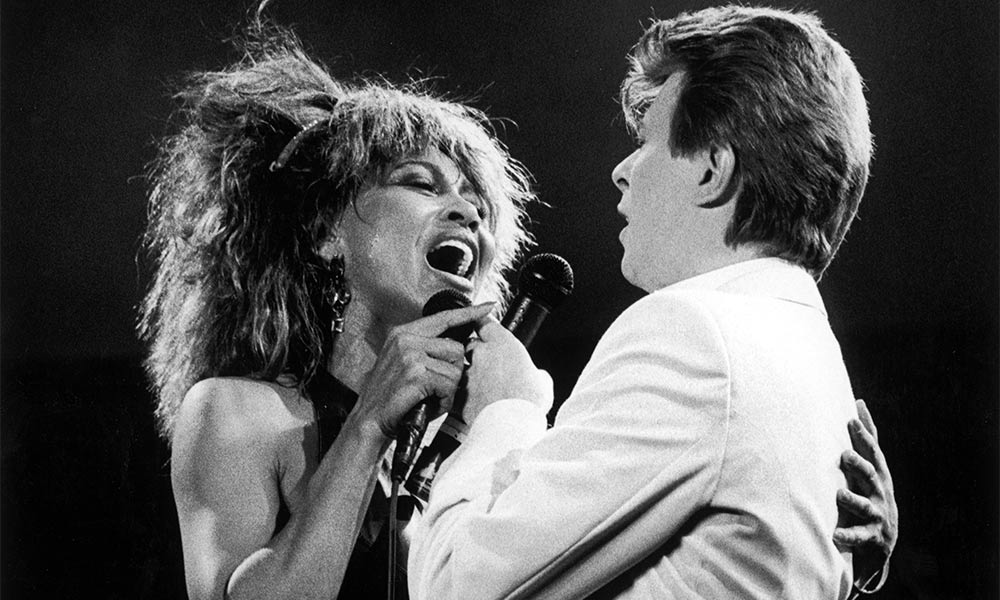
With an undisputed reputation as rock's all-time greatest chameleon, David Bowie managed to team up with the best and brightest rising underground stars of every generation … glammers, punkers, art-rockers, disco masters, rappers, R&B stars, industrial brooders, electronica blippers and contemporary indie rockers (and the list goes on). Throughout his five-decade career, Bowie had an unwavering knack for foretelling pop culture, but this certainly isn’t to say that the secret to his success lay in his ability to harvest fresh ideas from the progressive youth; from his mega-star peers to Bing Crosby to a Beatle passed their cutting-edge heyday – Bowie was able to produce equally compelling work with any artist he collaborated with. Bowie’s vision existed outside the realm of ‘cool’ because it was Bowie that defined cool.
The unsurpassed creative legacy he bestowed upon the world has only continued to gather momentum in the three years since his tragic passing. The power of retrospect reveals the sheer depth of artistic genius behind his colossal output. Bowie was an artist with an inhuman ability to not only endlessly reinvent himself but to also pair seamlessly with any collaborator to produce a genuine work of their unique union, not a David Bowie song featuring…
Every stage of Bowie’s career was marked by masterfully constructed personas, characters far beyond the imagination of any mere mortal. The colourfully elaborate and extravagantly androgynous looks of the 1970s, drastically reinvented just a few years later to flaunt the meticulously dressed, streamlined outfits of the Thin White Duke. From Ziggy Stardust to Aladdin Sane, fully conceptualized characters could appear as suddenly as they left, making way for the next chapter; the new reality; the new Bowie.
But Bowie’s longevity wasn’t built on reinvention alone; it was backed up by unmatched visionary talent and relentless creative drive. The fact that his career-spanning list of extraordinary collaborators doubles as a list of the world’s greatest artists, more than confirms this. Musicians, songwriters and producers, from the very top of their respective fields, across generations and genres, have all jumped at the chance to step into the wizardry of Bowie’s world. Here are 10 of the best!
1. BRIAN ENO
“Warszawa”
It’s been said that Brian Eno and David Bowie “revolutionised rock” with 1977’s Low, the first from Bowie's 'Berlin trilogy' of albums of the mid-1970s. It was just the beginning of a long-standing creative partnership, but the ‘Berlin Trilogy’ is widely considered to be the defining work of their prolific union.
Bowie had already begun experimenting with more modular, multitracked methods of song production on Station to Station (1976), but it was Brian Eno who guided him in assembling these elements into a radical new form. Living and working in Berlin, Bowie and Eno were immersed in the shadows of the dark and brooding city. They personified this melancholy mood in the ethereal instrumental “Warszawa.”
2. TONY VISCONTI
“Memory Of A Free Festival”
Tony Visconti was arguably Bowie’s greatest artistic partner. As a musician and producer, Visconti helped shape Bowie’s sound going all the way back to 1969’s David Bowie, and remained a key creative collaborator throughout the entirety of his career.
Thirteen of Bowie’s classic albums, including The Man Who Sold The World (1970) (on which he also plays bass), the Berlin Trilogy – Low (1977), "Heroes" (1977) and Lodger (1979) – right up to Bowie’s final studio album, Blackstar (2016), were all produced by Visconti. Bowie may have been a master of reinvention, but Visconti’s consistent presence through his many phases suggests this was the man he trusted as a guiding force.
3. NILE RODGERS
“Let’s Dance”
Nile Rodgers’ guitar work with Chic defined the funkier edge of 1970s disco and caught Bowie’s attention, right around the time he was dreaming up a commercial party record. Rodgers’ infectious groove was just what he needed to get the party started.
Bowie asked Rodgers to produce and play rhythm guitar on his next release, 1983’s Let’s Dance. His premonitions came true when the groove Rodgers laid down went on to basically define the sound of American Eighties pop. It also put Rodgers in high demand, with a whole host of high-profile artists, from Madonna to Duran Duran, all hooked on that groove.
4. MICK RONSON
“Starman” [Live on Top Of The Pops 1972]
Bowie’s fascination with space travel and science fiction was proudly celebrated in his earlier songs like “Space Oddity” and “Life on Mars?”, but the dawn of 1972 saw him draw these elements together into a singular grand and cosmic scope. Bowie forged himself a new identity as Ziggy Stardust – the tragic rock star alien witnessing a dystopian world – and also formed a supergroup for the seminal album called Ziggy Stardust and the Spiders from Mars.
Bowie actualized the rock star alter-ego by channeling his very own brand of alien glam, backed by his band ‘The Spiders from Mars’, which included the all-star lineup of Trevor Bolder (bass), Mick Woodmansey (drums), Mike Garson (piano). But it was the softly spoken Yorkshire guitarist, Mick Ronson who would feature as the key ‘Spider.’
Their performance of “Starman” in 1972 on Top Of The Pops is a truly spellbinding moment. With his shock of orange hair and psychedelic jumpsuit, Bowie looks as though he has absolutely been beamed down from another planet, but the way he nonchalantly drapes his arm over Mick Ronson’s shoulder, a clear blurring of the era’s gender boundaries, suggests maybe he really was from the future after all.
Mick Ronson was best known for his work in the ‘Spiders from Mars’ band, but his influence is evident in Bowie’s transformation from Major Tom to Ziggy Stardust, and beyond. Bowie’s insatiable appetite for the avant-garde could have blasted him into the musical stratosphere, but with Ronson by his side, Bowie established ground control. In all, they worked together on five albums in the 1970s and reunited on 1993’s Black Tie White Noise.
5. CARLOS ALOMAR
“Young Americans”
Carlos Alomar was a teenage virtuoso who was playing guitar professionally by the age of 16, backing the likes of James Brown, Chuck Berry and Luther Vandross throughout his formative years. When Bowie met Alomar in the mid-Seventies he recognized his potential instantly and recruited the young protégé to play on his funk- and soul-influenced 1975 album, Young Americans. It kicked off a long-standing musical relationship that saw the pair work together on eleven more albums between 1976-2003. Alomar was also a regular presence in Bowie’s live band between those years.
6. GAIL ANN DORSEY
“Under Pressure” [Live]
Sometime in 1989, David Bowie came across an interview with Gail Ann Dorsey while channel-surfing his way through British TV. He was instantly captivated by her otherworldly charm, perhaps he even saw a little of himself in this elegantly alien, phenomenally talented artist. He decided then and there that he must work with her – when the time was just right.
It took six years, but the time finally came when Bowie was putting together a band for a tour with Nine Inch Nails, he phoned up Dorsey to ask if she’d join as the bassist. Dorsey recalls: “I was kind of in shock that it was actually him on the phone. At first, I thought it was somebody playing a prank on me.”
Dorsey’s six-week contract was extended by about two decades. She would play by Bowie’s side all the way through to his final concerts in 2004. Their duet of the Bowie-Queen hit single, “Under Pressure” was an ironclad show stealer for Dorsey, who could somehow hold down the most iconic bassline of all time while flawlessly scatting Freddie Mercury’s gymnastic vocal. You wouldn't believe it possible if this video didn't exist to confirm that she couldn't only do it, she could make it look easy!
7. REEVES GABRELS
“Dead Man Walking” [Late Night With Conan O’Brien 1997]
Reeves Gabrels was David Bowie's go-to guitarist for over a decade, playing in Bowie’s Tin Machine supergroup and crafting the sound of Bowie's 90s era albums like Outside (1995), Earthling (1997) and 'hours...' (1999).
During their 13-year creative partnership, Bowie and Gabrels co-wrote more than 70 songs across eight albums. Their Earthling co-production was considered by some to be Bowie’s most creative work since the Berlin trilogy. Reeves Gabrels shared some fond memories of their friendship in an interview with I Like Your Old Stuff:
“David would call my house without even knowing I was in a band. Once he found that out and found out we were listening to the same stuff, I think it was part of the reason for me having that 14 or 15 years of working with David. The friendship was longer than the work period. He didn’t meet me as a musician – every other relationship he’s had with a musician he’d hired them. I guess I was his friend first and I enjoyed hanging out with him.”
You can listen to the recently released Tin Machine album Live at La Cigale, Paris, 25th June, 1989 " target="_blank">here on Spotify.
8. TRENT REZNOR
“I’m Afraid Of Americans”
And it was Reeves Gabrels who (apparently) introduced Bowie to the industrial orchestra of Nine Inch Nails:
“David came in one day and said, ‘Hey! Have you heard of Nine Inch Nails? You should check out this album!’. It was ‘The Downward Spiral’. I was like, ‘You know I played you Nine Inch Nails…’ and he was like, ‘I don’t remember that!’. He turned me on to drum and bass and I turned him on to industrial, that’s how it ended up.”
Nine Inch Nails opened for Bowie on his 1995-96 tour in support of his industrial-influenced album, Outside. Frontman Trent Reznor would later remix that album's lead single, "The Hearts Filthy Lesson" and go on to feature on Bowie’s next album, 1997's Earthling. The LP came with Reznor's foreboding mix of the single "I'm Afraid of Americans." The video features Reznor, as an American psycho stalking a paranoid Bowie through the streets of New York, and the track proved Bowie's pure versatility to nail a genre diametrically opposed to his own. Every single one of them.
9. TINA TURNER
“Tonight”
Bowie was an instrumental force in securing Tina Turner a recording contract with Capitol Records in the early Eighties, leading to the blockbuster success of 1984's Private Dancer (where she covered his "1984"). That same year, Turner appeared on the title track from Bowie's Tonight which had originally appeared as a dark, sinewy song on Iggy Pop's Lust for Life. Bowie and Tina revived the track with a fresh reggae feel and their live performance of the track reveals the warm chemistry they pair clearly shared as they slow dance and laugh through the moment of infectious, pure joy.
10. IGGY POP
“Lust For Life”
Raw Power (1973) by the Stooges was produced by David Bowie, and then Iggy Pop’s solo career (post Stooges) began with two albums produced by Bowie, The Idiot and Lust For Life, both released in 1977. “He resurrected me,” Pop told the New York Times back in 2016.
The Idiot saw Bowie downshift the vicious guitar-driven sound of the Stooges into chillier, synth-driven glam-punk territory. That same year, Bowie was back behind the boards for Lust for Life, taking a more synergetic approach to the production that helped Iggy reconnect with his primal punk-rock side. The title track and "The Passenger" remain his most well-loved songs. When Bowie died, Iggy tweeted, "David's friendship was the light of my life. I never met such a brilliant person. He was the best there is."
With so many great musical partnerships and collaborations, even if somewhat fleeting in comparison to the above, we aim to cover more great Bowie moments in Part 2 of this feature, Stay tuned!
Get David Bowie albums, box sets and vinyl here.
Listen to David Bowie on Spotify:
Listen to David Bowie on Apple Music:


